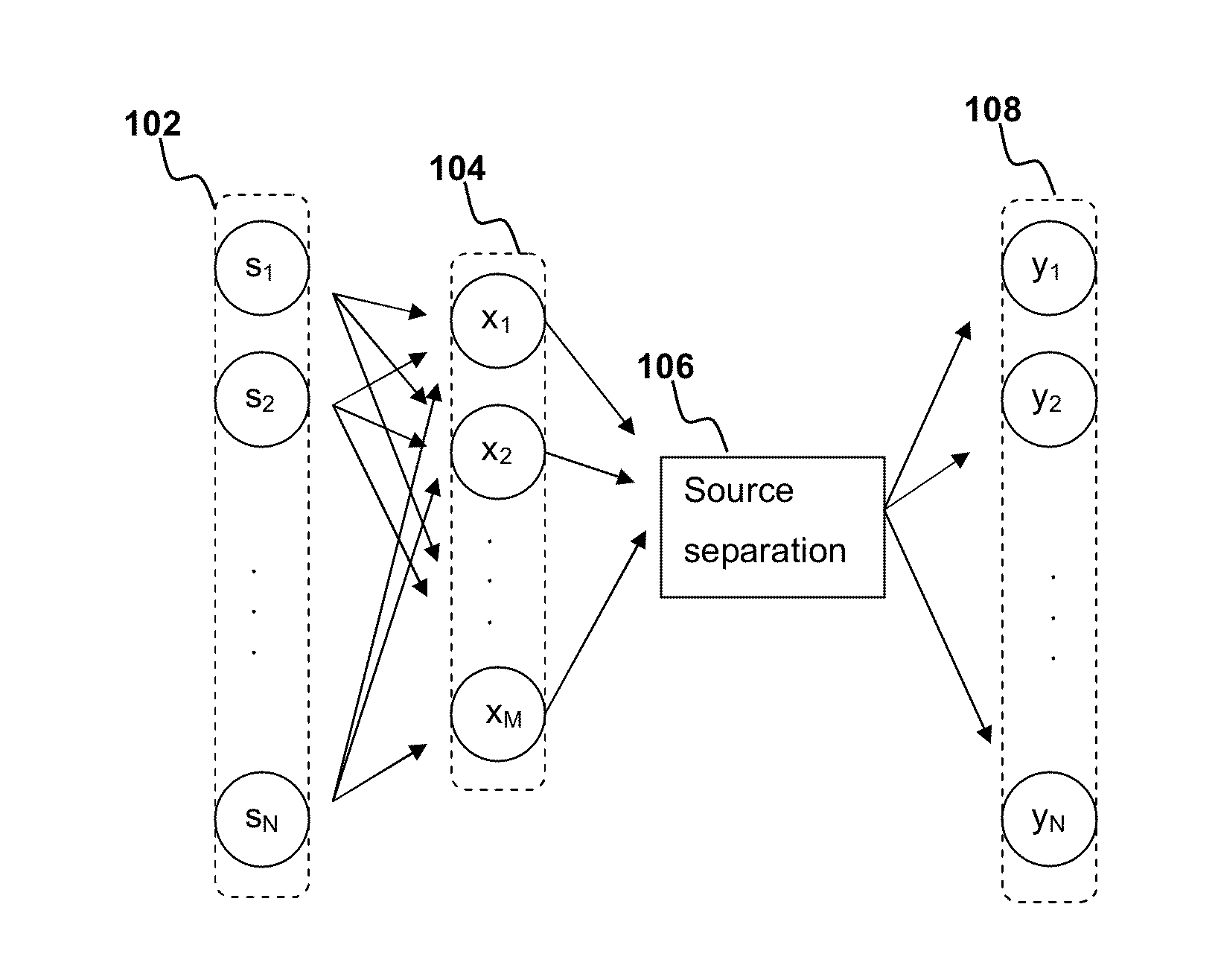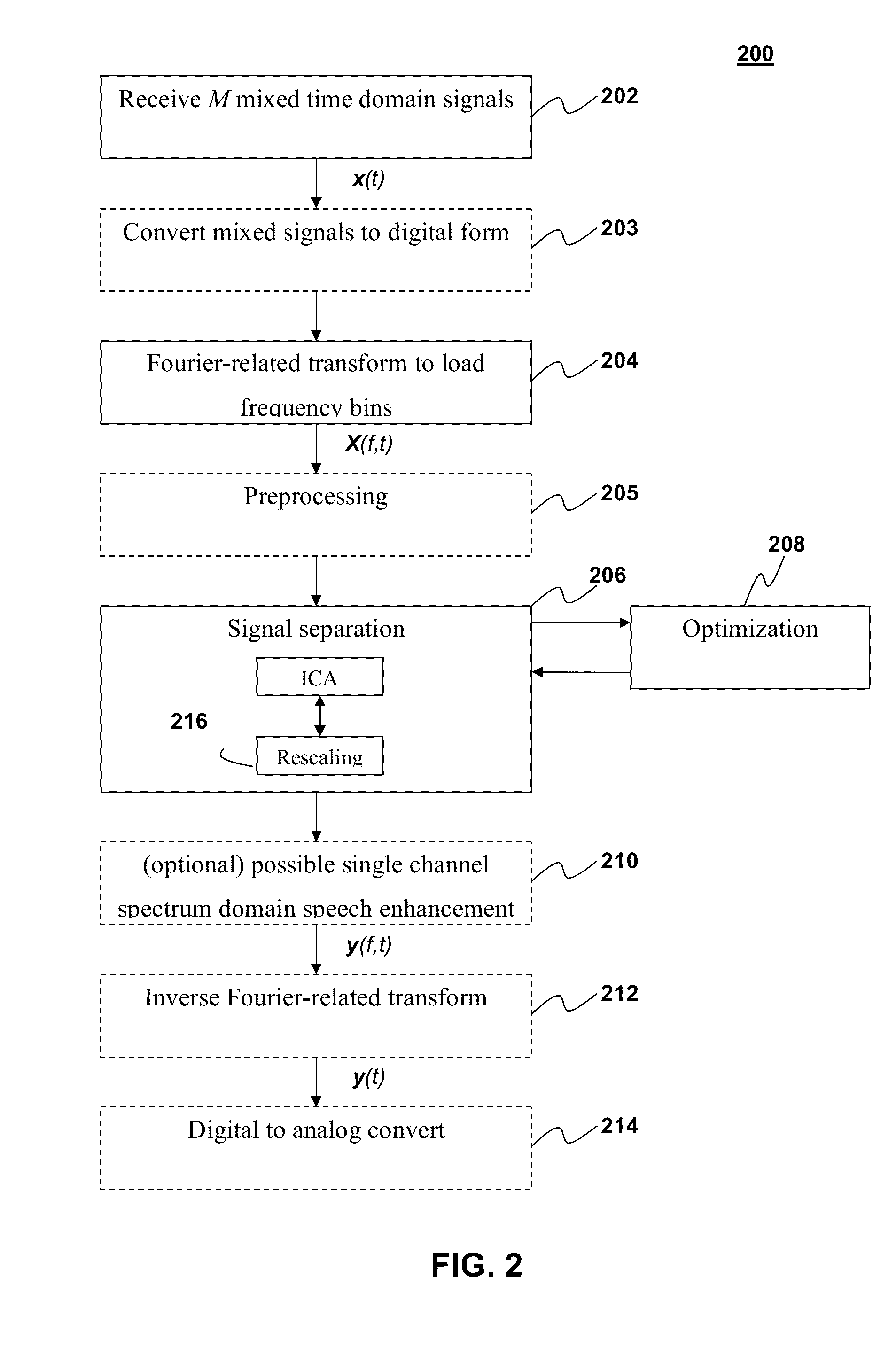Source separation using independent component analysis with mixed multi-variate probability density function
a technology of probability density function and component analysis, applied in the field of audio signal processing and source separation methods and apparatuses utilizing independent component analysis, can solve the problems of complex mixing process, high computational intensity of source separation, and inability to combine mixed signals,
- Summary
- Abstract
- Description
- Claims
- Application Information
AI Technical Summary
Benefits of technology
Problems solved by technology
Method used
Image
Examples
Embodiment Construction
[0023]The following description will describe embodiments of the present invention primarily with respect to the processing of audio signals detected by a microphone array. More particularly, embodiments of the present invention will be described with respect to the separation of speech source signals or other audio source signals from mixed audio signals that are detected by a microphone array. However, it is to be understood that ICA has many far reaching applications in a wide variety of technologies, including optical signal processing, neural imaging, stock market prediction, telecommunication systems, facial recognition, and more. Mixed signals can be obtained from a variety of sources, preferably by being observed from array of sensors or transducers that are capable of observing the signals of interest into electronic form for processing by a communications device or other signal processing device. Accordingly, the accompanying claims are not to be limited to speech separati...
PUM
 Login to View More
Login to View More Abstract
Description
Claims
Application Information
 Login to View More
Login to View More - R&D
- Intellectual Property
- Life Sciences
- Materials
- Tech Scout
- Unparalleled Data Quality
- Higher Quality Content
- 60% Fewer Hallucinations
Browse by: Latest US Patents, China's latest patents, Technical Efficacy Thesaurus, Application Domain, Technology Topic, Popular Technical Reports.
© 2025 PatSnap. All rights reserved.Legal|Privacy policy|Modern Slavery Act Transparency Statement|Sitemap|About US| Contact US: help@patsnap.com



